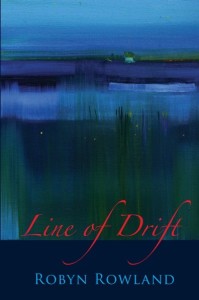 Line of Drift (Doire Press, 2015)
Line of Drift (Doire Press, 2015)
Kevin Higgins writes in the Galway Advertiser that
As the pull of personal history weights her anchor increasing in Ireland, Rowland’s poems are more accepting of the uncertainty that comes from belonging in both places. Dual citizenship adds a poignancy and sense of perpetual connection and disconnection. She interweaves Irish and Australian history and events into dramatic moments, so present they are tactile. Living in two places gives a unique perspective on what being Irish means. Where ‘coming home’ can be over-sentimentalized, in these poems the experience opens a greater understanding of culture, spirit and place.
Line of Drift represents history through the personal, explores the values of friendship, the relationships of others, and solitude. Through in memoriam poems it brings alive Australian and Irish friends, Irish poet Seamus Heaney, and Jacob Rosenberg, survivor of the concentration camps of Nazi Germany. Poems include tribute poems for Robert Adamson and Theo Dorgan, an Epic about the Island of Inisboffin that could be a history of Ireland itself. They swing between the bushfires of Australia and the lush Mayo forests and geometrical carved rock islands of Ireland. There is a deep generosity and a great tenderness in many poems, while others edge the reader into climate change issues and sexual politics. Her poetry shows an increasing engagement with history, drawing the personal into a new perspective, finding the universal through individual experiences of time and place.
To read reviews of this book, please click here.
